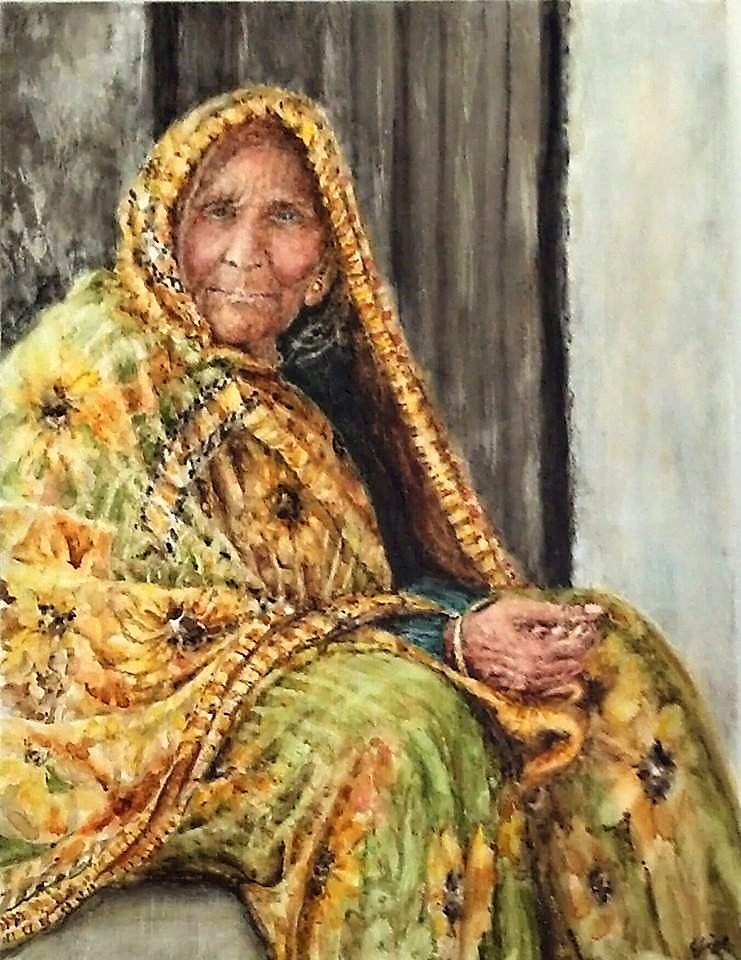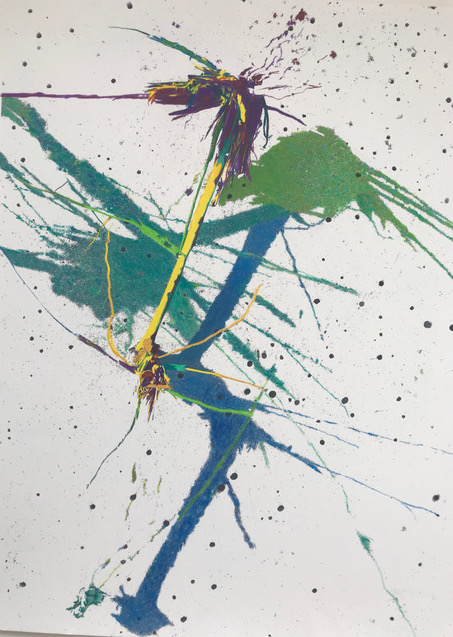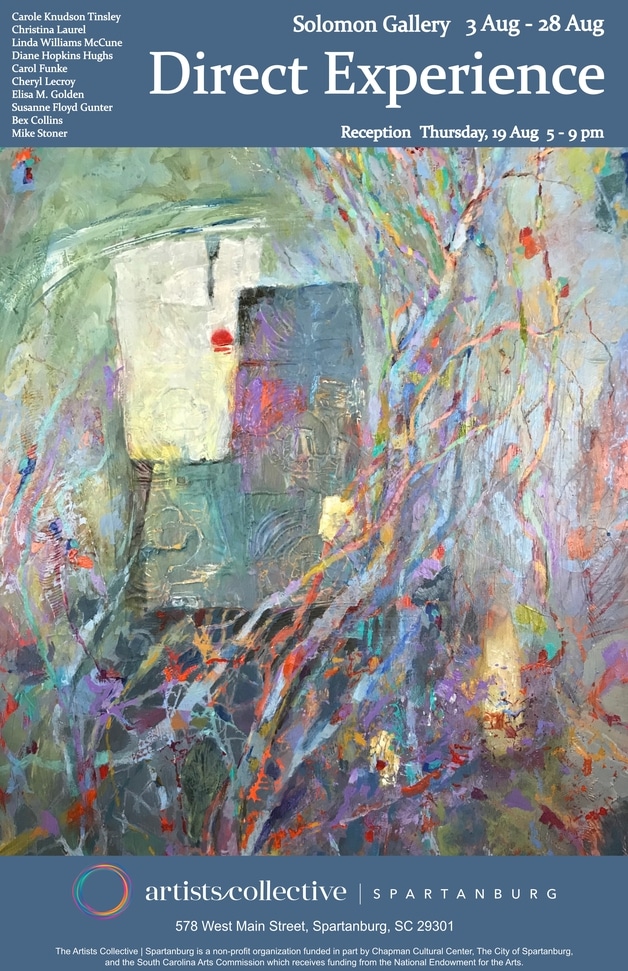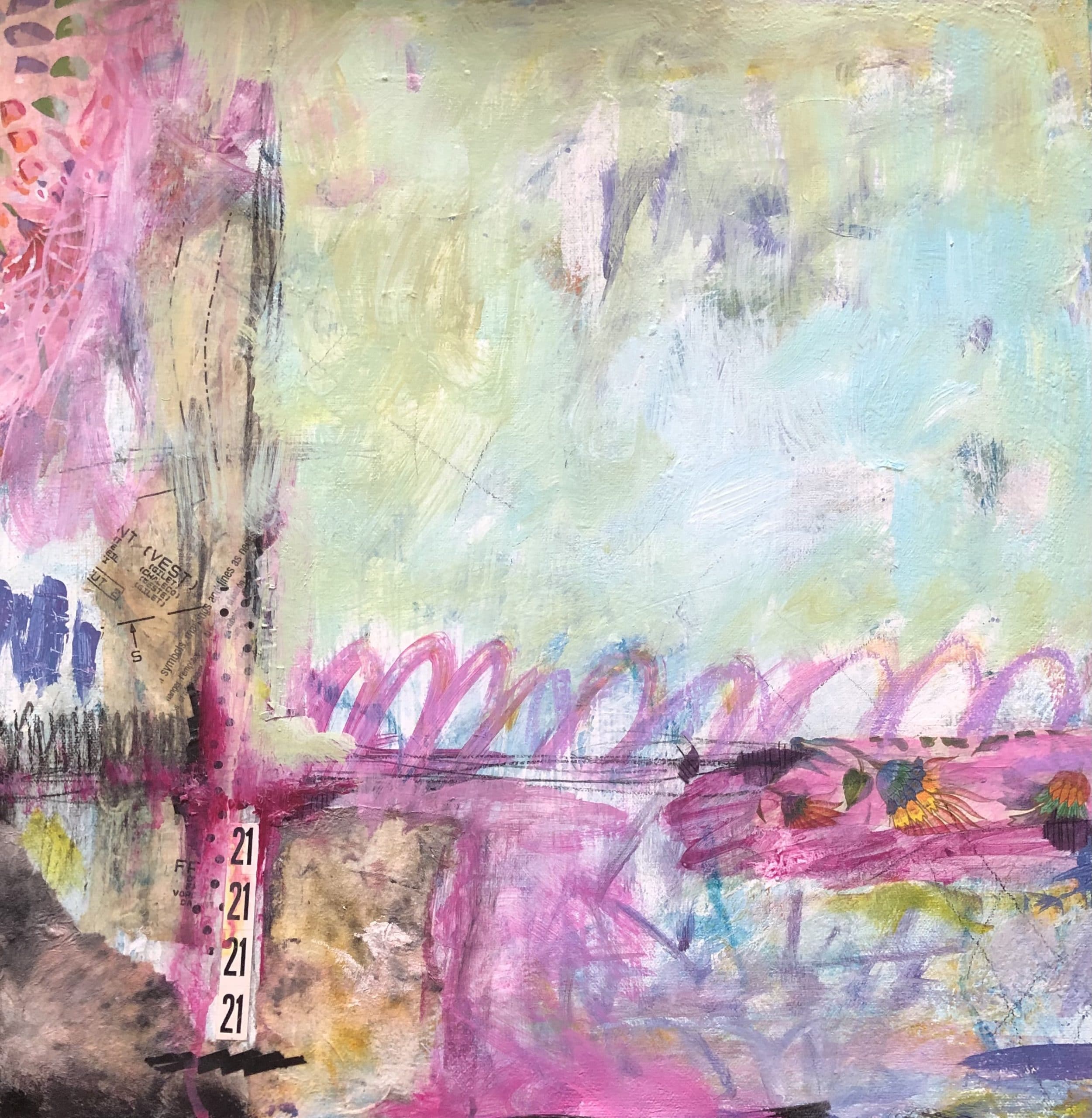
Ten Upstate people who live very different lives have come together under the shared experience of surviving cancer to create an exhibition of their artworks, “Direct Experience: Survivors,” showing Aug. 3 through 28 in the Solomon Gallery at the Artists Collective | Spartanburg.
“We don’t always, or for that matter, very often, deal with the actual subject of cancer,” says Susanne Floyd Gunter, one of the exhibiting artists who also is coordinating the show. “Some have, but typically we have moved into areas where it may be difficult for anyone to see us as anything but regular artists. After going through cancer, I think a lot of us think it is important to keep working and making art about our experiences with our ‘new life.’”
Direct Experience is a group of Upstate artists united by the commonality of being cancer survivors. In addition to Gunter, who paints in a variety of media, members of the group include Carole Knudson Tinsley (painting), Christina Laurel (paper, creative installations, mixed media 2-D work), Linda Williams McCune (sculpture, drawing), Diane Hopkins Hughs (photography), Carol Funke (handmade paper, watercolor, pen/ink), Cheryl LeCroy (jewelry), Elisa Golden (watercolor), Becky “Bex” Collins (encaustic and mixed media) and Mike Stoner (woodturning).

Visitors to the exhibition can expect to see about 45 works ranging from paintings, drawings, sculpture and jewelry that demonstrate the artists’ engagement with life, says Gunter, chair of the Department of Art and Design at Converse University in Spartanburg. “We want people to understand that ‘cancer’ is just a word. It does not have to take over your life.” The artwork will be available for purchase, ranging from $100 to $2,500.
“There is so much said and written about cancer,” says Gunter, who was diagnosed in February 2016 with stage 1 breast cancer. “As artists, we wanted to move beyond the conversation and establish a new topic – where do we go with our work after cancer?”
Toward the end of months of treatment of testing, surgery and radiation, Gunter experienced non-drug-associated “flashbacks” along with physical burns. “I realized that I was dealing with a phenomenological event and life was not the same,” she says. “The flashbacks took me to various places real, imagined and conjured from fragments in my life.”
Using a phenomenological approach during her healing this summer, Gunter began reviewing her life and art and how she wanted to continue to develop her role as an artist, researcher and teacher. “With the charge to create a body of ‘works on paper,’ revisiting and recreating the places from my visions became my objective. Landscape has always figured significantly in my work even when it was not the main subject matter; however, my new views reflected the impressions, colors, land and water forms that held meaning in and of themselves and that were not tied to a particular place in the real world but would be an assimilation of places in my past, present or mind’s eye. Indeed, what a long, strange trip it has been. The focus in my art-making would shift this year to where art making would take on even more importance in my life as a healing tool.”

LeCroy began making jewelry in 2011 after being diagnosed with breast cancer. “To keep my mind active and engaged while taking chemo, I started making jewelry during each five-hour chemo treatment. At the end of six treatments, I had six finished pieces of jewelry called my ‘triumph jewels,’” she says. “I used this time to explore jewelry fabrication and found that it brought me great joy.
“My journey with cancer has completely transformed my life, and in addition to jewelry fabrication, I also provide coaching to help other cancer survivors with diet, nutrition, and wellness,” she continues.
Stoner says woodturning and oral cancer will always be connected for him. “I was diagnosed with cancer within three days of my first gallery showing of wood-turned art. Woodturning became an unveiling of the core – an artful recycling, a search for what is within, a type of open introspective process of both artist and wood, a meditation.
“Art was the constant companion and looking for the life-lines in the wood and attempting to enhance the beauty in the natural forms became synonymous with my healing journey,” Stoner continues. “The new perspective remains, and I am forever grateful. Peace, light and Love – that’s the story.”


